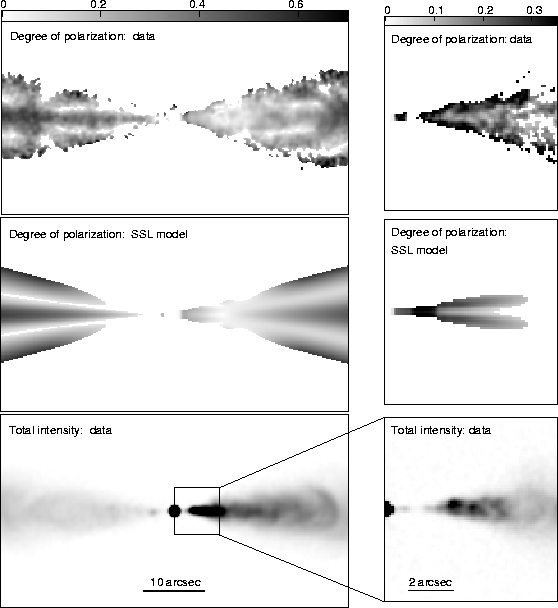 |

 |
Fig. 12 shows the predicted and observed degrees of
polarization
![]() at both resolutions, with the I
images below them for reference. The degree and direction of polarization
are represented in Figs 13 and 14 by vectors whose
magnitudes are proportional to the degree of polarization and whose
directions are those of the apparent magnetic field (i.e. rotated
by 90
at both resolutions, with the I
images below them for reference. The degree and direction of polarization
are represented in Figs 13 and 14 by vectors whose
magnitudes are proportional to the degree of polarization and whose
directions are those of the apparent magnetic field (i.e. rotated
by 90![]() from the E-vector direction, after correcting the
observations for Faraday rotation). Longitudinal and representative
transverse profiles at the lower resolution are displayed in
Figs 15 and 16, respectively.
from the E-vector direction, after correcting the
observations for Faraday rotation). Longitudinal and representative
transverse profiles at the lower resolution are displayed in
Figs 15 and 16, respectively.
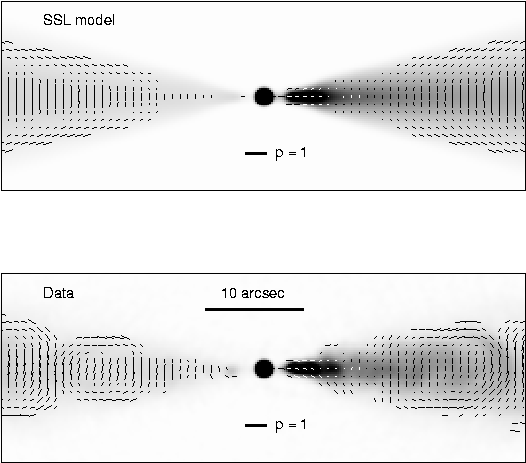 |
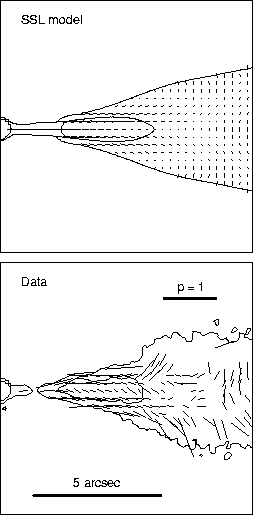 |
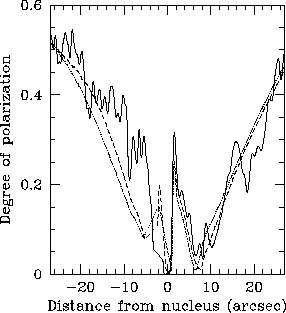 |
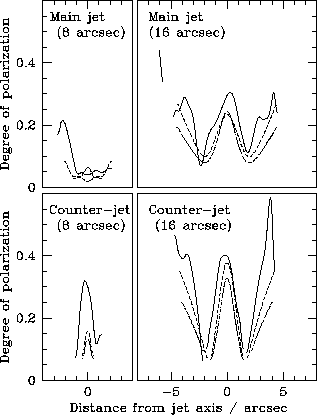 |